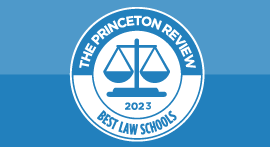
SPONSORED BY SOFI
As you contemplate an investment in your future with a graduate education, one of the biggest factors to navigate is how to pay for your Master’s degree or PhD. The best loan options for graduate school differ from what you may have experienced for your college degree, so it’s important to understand all graduate-school financing options so you can choose the ones that fit your needs.
Federal Loans and Private Loans: Secure the Best Loan for Your Grad Degree
The U.S. Department of Education offers direct federal loans at a fixed interest rate, designed to be a borrower-friendly option. These loans typically come with lower interest rates than private student loans, as well as income-driven repayment and loan forgiveness options—which are not typically features of private student loans.
Private loans are offered by banks, credit unions, and online lenders. The interest rate and loan amounts depend on your creditworthiness. If your credit score is low (or not yet established), you may need a cosigner—often a parent or guardian—to secure a private loan.
If you want to secure financial aid for graduate school in the form of federal loans, you still need to complete the FAFSA Ⓡ (Free Application for Federal Student Aid), which you may be familiar with from your college days. While you are not required to demonstrate financial need to secure a federal loan for graduate school, it’s the only way to qualify for federal grants and become eligible for direct unsubsidized loans (see loan options below). For private loans, you apply directly with your lender of choice.
How much should you expect to pay for graduate school?
These averages compiled by educationdata.org offer a guideline, but always research your particular program's total cost of attendance.
The cost of a Master’s degree typically ranges between $56,000 and $75,000 depending on the school, the length, and the type of program. See estimated averages by program here:
- Master’s degree: $59,684
- Master’s degree in Business Administration: $56,850
- Master’s degree in Education: $42,010
- Master’s degree in Arts: $66,950
- Master’s degree in Science: $57,770.
- Master’s degree in Public Health, Public Administration, Social Work, or Political Science: $74,840
Best Loan Options for Graduate School
Direct Unsubsidized Loans are the most common federal loan for graduate students. (Only undergraduate students qualify for subsidized loans, which do not require you to pay accruing interest on the loan immediately). Direct Unsubsidized loans offer fixed interest rates, do not require a credit check, and come with borrower protections. If you are comparing private and federal loans for grad school, know that direct unsubsidized loans have loan fees (calculated at 1.057% of the total loan amount as of July 2024), annual borrowing limits , and you begin paying interest on your loans during all periods (that is, as soon as you take out the loan).
Direct PLUS Loans offer a fixed rate that is higher than direct unsubsidized loans, require a credit check, and have higher borrowing limits that could help you cover the full cost of attendance. If you have maxed out on unsubsidized loans, you can apply separately for a PLUS loan from the federal government.
Private loans offer both fixed and variable interest rates. Fixed-rate loans have the same interest rate throughout the life of the loan, so you pay the same amount every month. Variable-rate loans have interest rates that may change over time. They may be attractive as they sometimes feature lower rates than fixed-rate loans to start. You may find that the repayment terms of private student loans are less flexible than that of federal loans. For these reasons, it’s always best to compare private loans to find the best interest rate, terms, and options that meet your financial situation.
More About Student Loan Interest Rates (for the 2024–2025 Academic Year)
According to educationdata.org, 6.87% is the average student loan interest rate among all student loans, federal and private.
As per the government’s official rates:
- Direct Unsubsidized loan rate: 8.08%
- Direct PLUS loan rate: 9.08%
Private Loan Considerations: What to Look for and How to Compare
Interest Rates – Compare the best rates by getting rate quotes (some lenders call it pre-qualification) from different lenders. If you are looking at variable rates, bear in mind that these can change over time.
Repayment Options – Based on your program and expected career path, find a repayment plan that aligns with your future income expectations.
Cosigner Requirements – If you have a limited credit history, you may need a cosigner with good credit to either secure a loan or secure a loan with a lower interest rate. Cosigners are making a serious commitment, as they are ultimately responsible for the loan repayment, so carefully consider who you ask.
Fees – Check for origination fees, late fees, etc.
How to Secure Graduate School Loans and Financing
- Complete the FAFSA
- Accept Grants and Scholarships (these do not need to be repaid, though some may require service in exchange)
- Research and compare all loan options, including private vs. federal loans, to evaluate rates, fees, repayment options, and additional services, discounts, or programs
- Remember that having strong credit or a cosigner is important for private loans or Direct PLUS loans
- Borrow only what you need!
Make Informed Decisions About Your Financial Future
By understanding your loan options and carefully planning your finances against your planned career, you can make more informed decisions about how to best finance your grad school education. It’s always a good idea to exhaust opportunities for scholarships, grants, and assistantships before turning to loans. But when you need additional resources, student loans—whether federal or private—can help you finance the total cost of your graduate education and make your degree a reality.
This overview does not cover all the options and issues you may encounter as you determine how to pay for graduate school. To help you make more informed decisions and achieve your education goals. visit our Paying for College Resource Center to learn more.
Explore Graduate Programs for You
Explore our featured graduate schools & programs to find those that both match your interests and are looking for students like you.
Best Law Schools
Check out our complete list of 168 law schools, based on surveys of school administrators and over 17,000 students.
Search for Medical Schools
Our medical school search allows you to refine your search with filters for location, tuition, concentrations and more.

Find MBA Programs Matched to Your Interests
Explore our featured business schools to find those that are looking for students like you.



